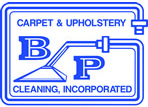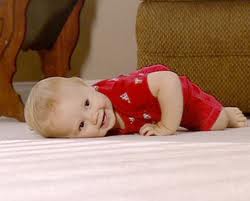April 12, 2024
Every March and April, people around the world push up their sleeves and give their home a major once-over—it’s the annual rite of passage we like to call spring cleaning. Many of us use this time to catch up on the tough tasks we can’t fit into our weekly cleaning routines(like cleaning those ceiling fans). Since we only do this once a year, we might not be working as efficiently or effectively as possible. To make your annual deep clean more successful, avoid the following spring-cleaning mistakes that ex-perts say most of us are making. Neglecting Dust Mites –Dust mites cause sneezing, itching, and rashes. Unfortunately, these mites come from us; they’re regularly found in dead skin cells that we shed all over our homes—particularly on upholstery. Removing them is crucial. Steam cleaning your upholstered furniture and mattresses at least once a year will help keep the dust-mite population from building up and worsening spring allergies. Having upholstery and mattresses professionallycleaned at least once a year is one of the most helpful ways to get control of dust mites and give you piece of mind that you are keeping your family safe and healthy. Using an All-Purpose Cleaner Everywhere –Many surfaces can be cleaned with an all-purpose formula, but there are some areas (like your sofa, curtains, and carpets) that require a special product for that job. Too often, we forget this and use the wrong cleaners—which either aren’t effective in taking care of the stains and messes or, unfortunately, make matters worse. To ensure you have the right fabric and upholstery cleaners in your kit, look underneath your couch for a tag with your upholstery’s cleaning code and use the corresponding clean products. Don’t want to tackle this project yourself, have your fabrics and upholstery professionally cleaned and save yourself the stress. You will love the result and add life to your home furnishings and curtains. Dusting the Wrong Way –The amount of dust that collects on ceiling fans, bookshelves, door jambs, and other hidden spots over the year is truly amazing and getting rid of it when we spring clean our homes is particularly satisfying. However, tackling these dusty spots in the incorrect order can sabotage the rest of your cleaning plan by sending dust onto spots you’ve already cleaned. Work from the highest area (like a ceiling fan) down to your furniture and then baseboards to avoid having to re-do your work. Use a damp cloth to wipe away the dust, helping to prevent it from spreading around in the air, where it can trigger or worsen allergies and asthma attacks. Keep Mopping on Your List –Floors are one of the most exposed areas in our homes, which is why mopping them frequently is crucial in keeping your home clean. And, make sure your replace those worn-out mop heads when needed to get the job done right. You Can’t Shampoo Every Rug –Synthetic carpets and rugs with waterproof backings can be deep cleaned with a rotary shampoo machine and a hot-water extraction machine. But, rugs without backings, including Oriental rugs, require professional cleaning only! Skipping Unseen High-Touch Area: the Walls – Overtime our walls and ceilings build up with unwanted marks. To clean them, start by using a vacuum to remove dust. Next, tackle stubborn surface grime,especially prevalent in kitchens, with a solvent-free degreaser (test it first in an inconspicuous area to ensure it won’t mar the surface). Neglecting Grout Lines –The cement based material between wall, floor, and counter top tiles is extremely porous and stains easily. No matter how spotless your bathrooms, kitchen or tile floors are, if the grout is dirty and stained, it will never look really clean. Protect it with a penetrating grout sealer—it’s best to apply it with a small foam brush or hire a professional to help you scratch this tedious task off your list. Overlooking the Importance of FireSafety –Be diligent about changing the batteries in smoke detectors (this should be done twice a year) and make sure units are free of dust. Teach everyone in your household how to use a fire extinguisher, and review escape plans. Your family’s life may depend on it. Failing to Protect Yourself –The biggest spring-cleaning mistake you can make is not taking protective measures as you work. Always wear gloves when cleaning to protect your skin and avoid any potential allergic reactions. If you have any questions, need anyadditional information or want to schedule a consultation, contact B/P Carpet& Upholstery Cleaning today. We are always happy to help and serve you

